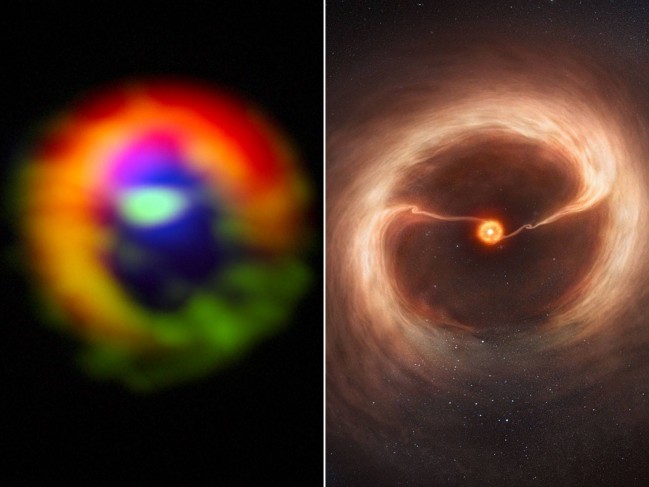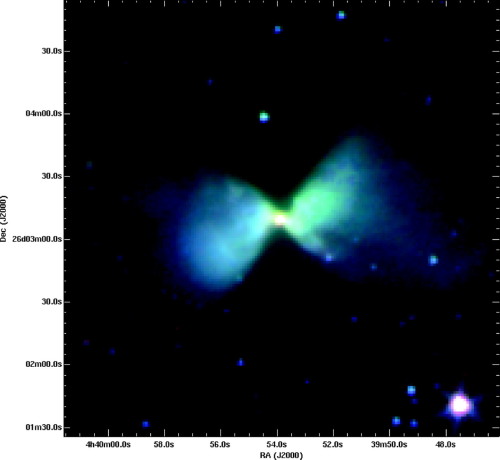Stunning images captured by Atacama Millimetre-submillimetre Array (ALMA) radio telescope in Chile show the early stages of a planet forming from stardust around a star located 450 light-years from Earth. This is the first time that astronomers have snapped such a clear picture of the process, confirming long-held theories of planetary formation.
[div class=attrib]From Independent:[end-div]
The world’s highest radio telescope, built on a Chilean plateau in the Andes 5,000 metres above sea level, has captured the first image of a new planet being formed as it gobbles up the cosmic dust and gas surrounding a distant star.
Astronomers have long predicted that giant “gas” planets similar to Jupiter would form by collecting the dust and debris that forms around a young star. Now they have the first visual evidence to support the phenomenon, scientists said.
The image taken by the Atacama Millimetre-submillimetre Array (ALMA) in Chile shows two streams of gas connecting the inner and outer disks of cosmic material surrounding the star HD 142527, which is about 450 light-years from Earth.
Astronomers believe the gas streamers are the result of two giant planets – too small to be visible in this image – exerting a gravitational pull on the cloud of surrounding dust and gas, causing the material to flow from the outer to inner stellar disks, said Simon Casassus of the University of Chile in Santiago.
“The most natural interpretation for the flows seen by ALMA is that the putative proto-planets are pulling streams of gas inward towards them that are channelled by their gravity. Much of the gas then overshoots the planets and continues inward to the portion of the disk close to the star, where it can eventually fall onto the star itself,” Dr Casassus said.
“Astronomers have been predicting that these streams exist, but this is the first time we’ve been able to see them directly. Thanks to the new ALMA telescope, we’ve been able to get direct observations to illuminate current theories of how planets are formed,” he said.
[div class=attrib]Read the entire article following the jump.[end-div]
[div class=attrib]Image: Observations (left) made with the ALMA telescope of the young star HD 142527. The dust in the outer disc is shown in red. Dense gas in the streams flowing across the gap, as well as in the outer disc, is shown in green. Diffuse gas in the central gap is shown in blue. The gas filaments can be seen at the three o’clock and ten o’clock positions, flowing from the outer disc towards the centre. And (right) an artist’s impression. Courtesy of Independent.[end-div]


 A diminutive stellar blob some 450 million light years away seems to be a young star giving birth to a planetary system much like our very own Solar System. The developing protostar and its surrounding gas cloud is being tracked astronomers at the National Radio Astronomy Observatory in Charlottesville, Virginia. Stellar and planetary evolution in action.
A diminutive stellar blob some 450 million light years away seems to be a young star giving birth to a planetary system much like our very own Solar System. The developing protostar and its surrounding gas cloud is being tracked astronomers at the National Radio Astronomy Observatory in Charlottesville, Virginia. Stellar and planetary evolution in action.